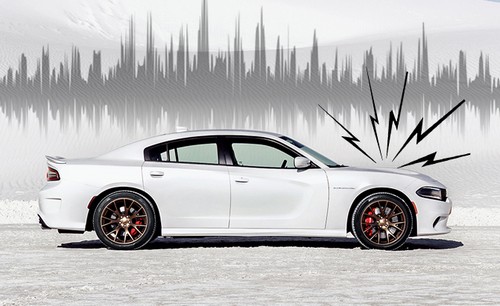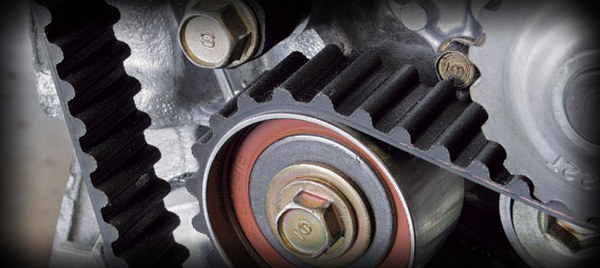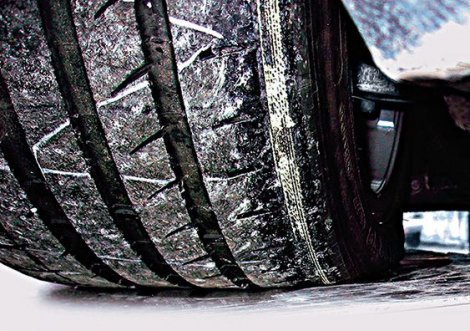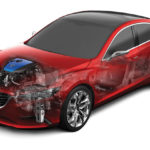Noise in the car - What can make noise in the car?

Noise in the car - Everything was fine. Now you hear disturbing sounds announcing the wear of an element. What can it be? There are several components that can make noise.
Wheel bearing - Noise in the car
Noise from the wheel area while driving the car is related to the wear of the wheel bearings. In practice, this is a fairly common failure, although theoretically these elements are designed for the entire life cycle of the car.
The sound of the wheel bearing is characteristic in a certain range of speeds, its intensification with increasing speed and there is a change of sound (usually intensity) when driving in curves - the loaded bearing is louder.
To make sure the wheel bearing has failed, the mechanic checks into the vehicle on the crane. The price of the bearing depends on the model and whether it only changes the bearing or is integrated with other parts.
Axle bearing
It is very easy to replace the fault with the worn wheel bearings. Therefore, in both cases, the mechanic should be convinced of the cause of the disturbing sound. Theoretically, it is easiest to distinguish between two types of failures in such a way that, in the case of a half-axle bearing, the sound does not change during a turn.
Power steering pump
The power steering pump is heard humming in a curve. The only difference is that the lower the speed, the more intense the sound, and the loudest is heard when it stops.
The power steering pump can only be replaced or regenerated if possible. Driving with a heavily worn device not only reduces the power of the aid, but also affects the durability of the steering mechanism.
Due to the rather high price of the power steering pump - it is necessary to determine whether the servo pump really needs to be replaced. Noise is often the effect of other disturbances in the chassis, which cause strong resistance when turning the steering wheel. Sometimes it is enough to fill the hydraulic fluid in the bottle of the servo system.
Alternator

Power steering pump is one of several devices that can make noise when driving. The alternator may be another. This is often the case when idling. It can howl or whistle immediately after starting the engine. The sound may depend on the engine speed.
The diagnosis consists of removing the belt that drives the alternator and turning the pulley manually. The rotor bearings may become stuck. This should not be underestimated, because when the alternator blocks, the belt can break and damage the engine compartment. Sudden loss of charge will not allow you to go too far.
Climate compressor
This is probably the most noisy device except the engine running under the hood. Sometimes loud work is completely normal. However, a clear buzz when the compressor is turned on may announce its wear.
The compressor can also make noise when the air conditioner is switched off, and you should suspect a defect on the pulley bearing that is in front of the clutch.
This is a malfunction, which is one of the cheapest on the compressor. Replacing the air conditioning compressor pulley bearing is not expensive in itself, but depending on the car design, disassembly and assembly can cause many problems.
Spanners, timing belt rollers or timing belt

Depending on the turntable, the noise of the spanner or the roller of the timing belt is difficult to diagnose, but it also indicates tremendous carelessness in the operation or use of extremely poor quality parts.
So, if you are suspecting the noise of the spanner under the hood, it is best to replace the kit with rollers, roller skates and a gear belt. It is easy to imagine that other elements are already worn out or of poor quality so that they can fail at any time.
Noise can be created not only on the pulleys, but also with a belt that works on worn pulleys.
Water pump
The water pump pulley is one of those elements that can make noise, but at the same time one of those whose failure can lead to engine destruction. However, it is difficult to diagnose the noise made by a water pump. The water pump usually drives the timing belt, and this over-tensioned timing belt can destroy the water pump pulley bearing, and may block the timing belt over time.
The water pump is changed every time the timing belt is changed, if it is one of the elements that drives the timing belt. In practice, the only reason to replace the pump should be a leak, which is why mechanics want to reduce costs for the customer, and leave the old water pump when replacing the timing belt.
Turbine
The sound, or rather, the characteristic whistle that largely depends on the engine rpm and its load can announce the wear of the turbocharger.
Not necessarily, though. Some types of engines are characterized by a turbo whistle, although it is far from worn. For example, diesel in Mitsubishi vehicles.
Clutch bearing
Noise that appears after depressing the clutch pedal indicates a clutch failure. The bad news is that while the bearing itself is a cheap element, replacing it can be expensive.
Transmission
Transmission noise can indicate bearing wear (primarily noise) as well as gears (howling). In either case, it will not be without expensive repairs or replacements with another used gearbox. This does not apply to models for which bearing wear is typical. Then, when you buy a used transmission, you are exposed to double the cost.
The most common cause of wear in gearbox bearings or gears is low oil levels or old oil - except for faulty construction, such as GM gears in various Opel models or Honda Civic VII.
There can be noise and code automatic transmission. Most often this happens before moving to a higher gear. In many constructions, this is a completely normal occurrence (if not too loud), so one should not worry about it immediately.
Cardan bearing on the carrier
The rear axle cardan bracket is equipped with a bearing that, when used, can produce both looseness and twist. The sound increases as the speed increases and you can hear it clearly under the car.
Unfortunately, replacing a bearing or shaft can be very expensive and complicated, and it happens that some solutions require the replacement of all or part of the drive shaft. Fortunately, axle wear is quite rare.
Rear differential - axle
The characteristic sound coming from the back increases as speed increases, but also changes when we add gas or brake the engine.
In principle, the only way to effectively repair it is to replace the differential elements. It is worth checking if there is any differential oil or it may be gone.
Edge

Tires make the most common noise for two reasons. The first and most common is tire wear. This is again the result of a trap problem (usually poor geometry).
Another reason is the increase in temperature in the spring. When it gets hotter by the day, winter tires can make a lot more noise than at low temperatures. The noise can be so large that it can easily be replaced with damage to the bearing. This is clearly a sign that it is time for a change tire for summer tires.
Recommendation of similar texts:

Hi there, I am Mladen and I am an auto enthusiast. I started this blog years ago to help like minded people share information about latest cars, car servicing ideas, used car info, exotic cars, and auto technology. You will find helpful articles and videos on a wide variety of cars - Audi, Mercedes, Toyota, Porsche, Volvo, BMW and much more. Ping us if you have anything cool to share on latest cars or on how to make older cars more efficient, or just want to say hi!






